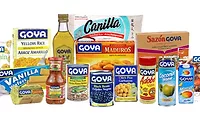Poland aims to increase pork and beef exports to the U.S.
Polish processors also face the same supply chain and labor issues as their North American counterparts.

Shoppers at a SPAR grocery store in Warsaw, Poland, browsing the butcher-attended fresh meat section. (Photo by Michael Costa)

A Polish pork-filled endcap near the fresh meat section of a SPAR grocery store in Warsaw, Poland. (Photo by Michael Costa)

Packaged Polish meats on display at a SPAR grocery store in Warsaw, Poland. (Photo by Michael Costa)

One of Warsaw's most popular artisan butcher shops is Befsztyk, which features meats from Polish producers and hard-to-find seasonal items. The street Befsztyk is on—Pulawska—is also the name of a Polish breed of pig. (Photo by Michael Costa)
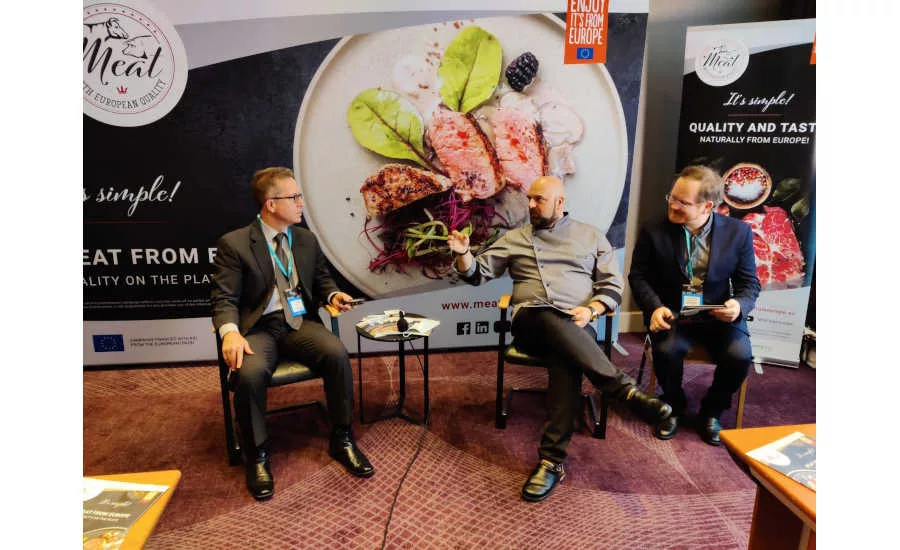
While in Warsaw, I spent a full day at the Food Market and Trade Forum, which brought food processors, chefs, and others in the industry together for panel discussions, exhibits and sessions focused on current challenges facing the food industry. (Photo by Aleksandra Rucz)

Speaking of chefs, one of Poland's most famous culinary celebrities—Chef Robert Sowa—joined our group for dinner at his acclaimed N31 restaurant in Warsaw. Chef Sowa created a multi-course meal for us to showcase the versatility, flavor and quality of Polish meats. (Photo by Michael Costa)
A few weeks ago, I was invited by Meat from Europe—an organization promoting European Union meat products within the EU and abroad—and the Union of Producers and Employers of Meat Industry (UPEMI) to visit Poland and two of its meat processing facilities: one dedicated to beef, the other primarily pork.
The purpose of the trip was to see and taste what differentiates Polish meat from competing countries, as Poland aims to increase pork and beef exports to the U.S. and Canada, perhaps as soon as this year, although no definitive dates or volume of product have been set at the time I write this. Poland’s main markets are currently domestic and other EU countries.
Our travel group consisted of eight B2B journalists—four from America, and four from Canada. At each processing facility, we sat down with the owners and operators to discuss how their facilities have adapted in recent years to accommodate increased demand, while dealing with a labor shortage and fluctuating market prices for their beef and pork products.
Poland—which has a population of approximately 38 million—doesn’t have the same enormous industrial meat processing and packing infrastructure that we do here in the States. Poland’s producers are primarily comprised of smaller and mid-sized farms and plants, where the focus is on being able to consistently manage and monitor animal health and welfare, which Polish producers say yields higher-quality meats in the end.
While there are obvious size differences between processors in the U.S. and in Poland, both countries currently share the same challenges when it comes to supply chain delays, labor, equipment and resource shortages, changing consumer dietary preferences, and more.
Each facility we visited was about an hour east of Warsaw (where we were based) so we passed a lot of the countryside and farms where cattle and hogs are raised in each round-trip journey outside the city. On an unrelated side note, the newer EU highways in Poland make getting around very easy—even for long trips.
Below, in their own words (with the help of a translator) each processor we visited details what it’s like to run a meat plant in Poland today, and what obstacles they face in the marketplace.
Waldemar Podniesiński, President of ZM Mokobody
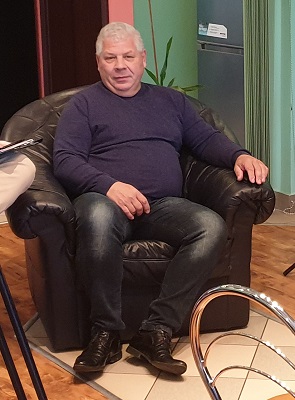
(Mokobody meat processing plant focuses on purchasing beef livestock, as well as slaughtering and selling beef products. Since 2010, the company has been successively extending production rights to foreign markets, sending products to Hong Kong, Japan, the United Arab Emirates, and others.)
In the early years of our operation, we mostly slaughtered pigs and cattle. For three decades, our plant has been family owned, and my wife and I took over the company’s operations in 2000. Today, our kids are involved too: two boys, two girls, the oldest is 29, the youngest is 19.
In 2008, our LLC was established with the name it has now—Mokobody. There was a very big investment in our operation just before Poland joined the European Union in 2004—the whole plant was actually rebuilt from the ground up over a seven-month period. We entered production in 2004 as a fully upgraded European Union slaughterhouse facility, which was our main objective. We had to have a new plant that would meet all the European requirements, and we needed updated technology.
The reconstruction of our plant in 2004 was similar to using a knife. When you work in a slaughterhouse, you have to have a very sharp knife. So in 2003, we were standing at the crossroads where we could either spend the money to sharpen our knife, or go forward with a dull one.
If we didn’t upgrade our technology then, we would not be here today because the plant would be simply be obsolete now. But we decided to invest in such a way as to meet and maintain all the requirements of the EU. When we expanded and upgraded, it was built with automation in mind. So we left room to have any type of automation equipment added later.
Halal beef
During your tour, you saw only half of the slaughterhouse because the second half is dedicated to pork. However, we decided to stop pork slaughter in 2005, and since then we are focusing solely on cattle.
The reason for phasing out pork slaughter was the economy of it. It was not profitable, so we decided to focus on beef. Pork and beef are also competitors on the market, so it was more reasonable for us just to specialize in beef.
A very big part of our operation is halal slaughter of beef. We’re very strongly engaged into the Islamic markets for halal meat. We ship fresh or frozen depending on the distance. We’re certified to export to Dubai in the Emirates, Uzbekistan, Turkey, Indonesia, Japan, Hong Kong, and others. So this is our main focus right now.
The price we get for halal meat is key for us. In 2010, we were the first Polish brand that entered the Turkish market with our halal meat. We were sending about 17 trucks a week to Turkey at the start.
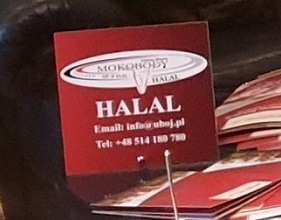
Our plant is certified by the Islamic Faith Association, and we have to undergo an audit every year to keep this certification maintained. I am a gentlemen so I don’t talk about money, but halal certification is a significant expense.
This includes special training for the people performing the halal slaughter. Our plant has to have two full-time employees of Islamic faith so they can work different shifts. This is why you see employees here from Kazakhstan and Uzbekistan. We have a special slaughter cage, and it’s not an easy slaughter process—it’s quite a complex one when all the requirements are factored in.
Here in Poland there are about 10 major buyers for halal products, and honestly, six or seven of them will finally come here to Mokobody because we have an established brand on the market. So one way or another, they will come here when it’s time to buy.
We export to the Chinese market for leather, not meat. We have government representatives who are fighting to get the Chinese market open for Polish meat right now. Nobody from Europe is currently exporting meat to China.
Beef quality
Basically, we slaughter all kinds of cattle here—younger, older, heifers. If you think about Polish cattle and the Polish breeds, they don’t have as much muscle as other breeds around Europe, but still, the difference is the excellent taste of Polish beef.
We get questions about growth hormones and questions about antibiotics, but here in Poland we use natural feed like straw, maize, things like that. Everything is done for the animals to make them comfortable. If the animals are stressed, the meat looks black, and the pH is completely different from a non-stressed animal.
As you saw on your tour of the plant, We believe strongly in quality. Everything is kept in quite pristine condition. For example, in the holding pens for the cattle, we have tiles that reach all the way up to the ceiling, which is more hygienic.
The official capacity of our plant is 200 head of cattle per day, so it’s more or less 900 heads per week. This is due to the capacity of the livestock holding area and our cold storage space. When we started exporting to Turkey, we went up to 240 per day, so it depends on the demand.
We don’t slaughter for slaughtering’s sake, and we don't keep an inventory of product in our storehouses. We just slaughter when there is demand.
Our beef is cut in quarters. We don’t have a cutting line for fabrication yet, but it’s an idea for future expansion here. There is another plant we partner with for further processing that we have a very good business relationship with. Although with offal and internal organs, that’s no problem. We portion and cut them ourselves. The money in our industry is in the ready-pack, pre-cut portions of meat, and it’s best from a business standpoint when everything is done in one place under one roof.
We have two meat graders, and they’re tested and requalified every two years by the Veterinary Inspection International. One of those employees recently passed his qualification exam again. So they grade the carcasses and classify as necessary.
Supply and staffing
We’re very reliable in our payments to livestock farmers—they don’t have to wait for the money. We grade their cattle objectively, and we have contracts with them to deliver cattle to our plant.
Honestly, pork right now is not profitable, and the general beef situation is also not very profitable, which is why we focus on halal beef exports. For example, imagine you’re a farmer with a bull here in Poland. You will get maybe 1,500 euros for that bull, and that’s after two years to raise it, plus the cost of feed, housing, electricity, everything. The only thing left at the end is manure, to be honest.
So, for any young person in Poland today, they can go to a job and earn 1,000 euros in a fairly short amount of time. Because of this, we’re seeing a generational shift in this industry. There aren’t really farmers anymore like my parents were, and their readiness for the difficult toil of farming.
Because of the pandemic, the animals are quite difficult to come by right now, so there is a supply problem. The number of cattle in Poland is steadily decreasing, so all the plants and slaughterhouses have the same problems. In Poland, we’re now in a situation where if you want to buy some livestock, you have to make decisions quickly. You really cannot wait, because if you wait, they will disappear immediately because the competition will snatch the animals.
The lack of labor is the problem for everything. Even the people who import our halal meat, they have labor problems too. We have an employee from Uzbekistan, and I recently took the documents of four of his friends to the work-related authorities to get them registered so they could work here. We also have two people from the Philippines working at our plant too.
Our company is currently building housing for our workers from other countries. I need those kinds of attractions, otherwise I would have nobody working here. The lodging will be free of charge for them.
In every business, whether it’s mine or another, you have to put your heart into your work. Like I said before, this is a family owned operation. I’m not a contract worker, and I don’t work here eight hours and I’m gone. I take care of it 24-7. I know how to tighten a nut, for example, in our smokehouse. I know how to negotiate with farmers and I know how to talk to them. I know how to run the entire company. This is the main difference between us and many other similar operations.
Irena Hejnia, Managing Director of ZM Mościbrody
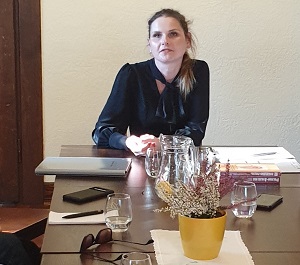 (Mościbrody meat processing plant was founded in 1996. This family-owned company produces and sells cured and raw meats. Mościbrody products are certified by such labels as “Jakość Tradycja” and “Poznaj Dobrą Żywność”.)
(Mościbrody meat processing plant was founded in 1996. This family-owned company produces and sells cured and raw meats. Mościbrody products are certified by such labels as “Jakość Tradycja” and “Poznaj Dobrą Żywność”.)
We make traditional smoked products from turkey, beef and pork, and we also slaughter beef and pork. We have our own retail chain with almost 40 shops, and we’re exporting to Germany, France, and we have many partners in Italy. They're coming here and choosing the best meat, which they want to buy and age.
We are also starting partnerships in Denmark, and the past four years I’ve been working with Japan to export smoked turkey drumsticks and other smoked products into that country. We have around 250 people working here at the plant, and another 100 in our retail chain.
Because we process and package meat products, we can export to other countries that we cannot export to otherwise. For example, we cannot export raw meat to Japan, but we can export processed products to Japan.
Challenges and competition
Right now, working here in this area, the price for pork given to the farmers is the lowest one I can remember. It’s a bad situation. The profit for me is that I am buying less expensive meat for our fabrication and production, but for the small farmers, this is an awful situation.
On the other side, the larger farms are delivering, for example, not five or ten pigs a day, they coming to us with 1,000. And right now, we have a situation where three or four suppliers give us their price together. It’s not a situation where we can choose the better price from one or the other supplier.
People here in Poland are not buying solely based on the price of meat, but for the quality of meat. In Poland, we have a long tradition of eating pork, much more than beef, especially with the older generation. However, the younger generation goes for turkey products, others for beef, so the current pork market is changing here in Poland because of this.
We are still learning how to sell our products more effectively here in Poland. Maybe 10 to 15 years ago, Poland looked at Russia as the main export market, so we had everything exported to the Russians. But, Russia eventually closed their borders to us, and then they started to learn how to produce those products that we used to export to them.
So, in those 10 to 15 years, we start to see products from surrounding countries and the industry that makes them become more developed than ours. So, our niche now is to focus on the superior quality of our meat and take our products to market on that high level to differentiate from others. We are proud to sell meat produced from Poland today.
The competition for us here in Poland is huge, because there are a lot of plants like ours that are around the same smaller size. It’s hard here to develop big plants because you have to invest huge amounts of money. We are ranked #120 right now in plant size in Poland, so we’re in the middle of the category.
So, we have a lot of competitors. We have to compete with many other factories for turkey and pork products in our market. Like I mentioned earlier, we can’t negotiate for the price of pigs, for example, because you’re buying the same pigs from the same suppliers. So it’s hard to make something that’s different from others on the market that customers want to buy.
Pursuing Pulawska
We have decided to make a special line of products with only one breed—the Pulawska—that was originally bred here in Poland. Right now, there’s 1,300 pigs with this bloodline, and we’re working to get the Pulawska breed into stores. The Pulawska is the fattest pig breed and biggest in Poland and is better for restaurants because of the fat and the taste.
I think that the Pulawska breed is something that people don’t know yet outside of Poland, and that maybe all pork is viewed the same so they don’t see any difference between the breeds. For me, I’m actually working with the pork here, and I understand the difference. I hope people eventually see the difference between the Hampshire—that’s the most popular breed in Poland—and the higher quality of the Pulawska.
And what’s also important from my point of view, is that we are developing products from the Pulawska breed to create a demand for the farmers to raise more of those pigs, because it’s a problem to buy them in quantity right now—they’re rare. And the reason they’re rare is many other buyers think the Pulawska has too much fat, but right now, we make 40 products from the Pulawska breed.
Supply chain and labor
I just found out we have a problem with one of our bagging machines and need a new one, but the wait for a new machine right now takes six months. So, I have to find an outside plant that can help us with bagging. We also need another slicer to handle demand, since our retail chain customers expect our meat to be sliced.
Everything is hard to buy right now, and because of coronavirus, we don’t have any imports from China. So we’re waiting on a machine that we already ordered a long time ago, and in the meantime, we’re seeing if we can bring in machines from other places to maintain production, but it can be hard.
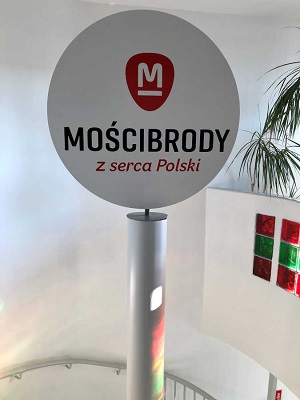
We’re still growing as a company. We are ordering new machines, expanding our footprint in our plant, and also hiring more workers.
Speaking of workers, I think in the United States, you have the same problem finding people. In our plant, maybe 50% of the workers are from Poland, others that we have right now are from Ukraine and Georgia.
The staffing problem for me is workers from outside Poland are coming here for a short time, and they’re learning a new process. It takes about a month for them to learn their jobs, and by the third month, they’re going back to their countries.
Some stay here for half a year, but it’s not possible to stay here longer because of their work permits. So the labor pool here is the biggest problem, and it’s very difficult to find new workers. The ones we have learn how to work in meat processing, then when they leave take those skills to other countries like Germany.
Right now, because of the pandemic, some Polish workers are staying here, so it’s a little bit better for us, but not a lot.
Flexitarians
The number of vegetarians are about 15% in the U.K. Here in Poland it’s about 8%, and in Europe overall it’s about 4%. Right now flexitarians are growing in popularity, so we are developing new products that can combine meat and vegetables for this segment. However, it’s not ready for retail and doesn’t generate a lot of interest with our core customers. It’s a product that combines peas, carrots, and mushrooms with meat.
In my opinion, a flexitarian is someone that eats meat sometimes, maybe for a big occasion or a celebration, but not every day. So it’s a very small market, and I’m not sure it’s a good market for a company our size. My production monthly is between 200 to 400 tonnes of meat. For the flexitarian market, maybe we’ll sell one tonne.
So, to change parts for our machines or buy new machines so we can produce flexitarian products would be expensive and not practical. But, I also realize I need to move with the times and develop something that addresses that market.
Reputation for quality
My sister lives in Minnesota, and she said she’s only buying food in the Polish stores, which I was surprised to hear. I said, “What stores are you talking about?” And she said they have special shops that only import products from Poland. So I asked her what the price is of those Polish products she’s buying, and it turns out they are five-to-six times higher in those shops than they are here in Poland. So, there’s a reputation for high-quality meat that we produce in Poland, and the prices abroad reflect that.
Looking for a reprint of this article?
From high-res PDFs to custom plaques, order your copy today!






